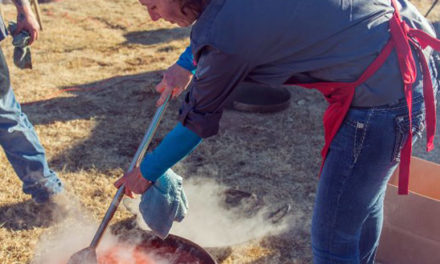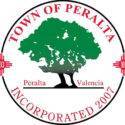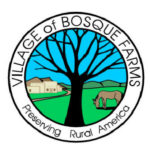The rural community has had mixed responses to the proposed half-mill levy that the Valencia Soil and Water Conservation District (VSWCD) will take to the voters on June 18.
“We have received both support and criticism from the various agricultural groups we have spoken to,” said Dale Jones, vice chair of the district. “Admittedly, insufficient groundwork was laid with various groups in the county, such as the Farm Bureau, but we hope the public can appreciate the fact that the crisis for such an effort arose only a few months ago.”
The crisis resulted from Valencia County’s financial dilemma that resulted in suspension of funding to the VSWCD and the Valencia County Extension Service and reduced the work hours of county employees.
“The suspension of funds left the VSWCD with only 40 percent of its normal operating budget, yet it is still responsible for review of subdivision terrain management, as required by state law,” Jones said. “It also threatens to put the county’s extension service out of business unless another funding source can be found.”
In looking for a solution to the funding problems for the two agricultural programs, the VSWCD’s board of supervisors opted to access the state law that established soil and water conservation districts. It gives each district taxation authority of up to one mill for support of their programs if approved by landowner voters.
“Unfortunately, the extension service does not have this same authority, so we decided to combine our two needs and go to the voters with a half-mill levy,” Jones said.
“We are asking the community to pass the 10-year levy. By law, we can ask for a full mill levy, but we decided our program needs can be met with half a mill.”
Half of a mill on propoerty with a $100,000 market value, which has an assessed value of $33,000, will be $16 a year.
Because of state statutes, farm crop land’s taxable value is $465 per acre with an assessed value of $155 per acre, so the half mill levy tax would be approximately 7 cents per acre.
“We are guessing it will average $10 a year for the average property owner,” Jones said.
The conservation district and extension service estimate their budget for the anticipated $360,000 annually will be $80,00 for the extension service programs, $165,000 for farmland projectds, $75,000 for open space and urban projects and $40,000 for personnel costs.
The district has received criticism that the proposed half-mill levy fully supports the extension service for only two years, then supports it partially the next three years.
“Our intent is to assist the county commissioners by providing temporary funding for the extension service while continuing to honor the original intent of the federal law that created the extension service and the state law that empowered only the county government to appropriate funds to support the extension’s work in the county,” said Frank Holguin, extension agent for Valencia County.
“The New Mexico State University Board of Regents had to see a link back into the county funding before they would approve our being included in the half-mill levy. They felt that if we were totally funded into the future by funding sources other than the county, it would set a precedent which other county governments would want to follow when they, too, were in financial difficulties,” Holguin said. “By state law, it is the responsibility of the county government to support one-third of its extension service costs.”
Another criticism the district has received is that its seven-member board will be making independent decisions on where the mill levy funds will be spent.
“We have a proposed budget, but, because we are dealing with some unknowns, like what the exact funding will be and how many people will apply for the various programs, we must have some built-in flexibility,” Jones said. “However, we believe this criticism has some merit, and we are working to establish an advisory group from the community to help in planning the allocation of funds to segments of the program.”
The conservation district is inviting various groups, such as the Valencia County Farm and Livestock Bureau and neighborhood associations, to participate in the advisory group.
A third area of concern by the agricultural community is who will receive the funds for private projects.
“Currently, a landowner requesting Farm Service Agency and Natural Resource Conservation Service funds must qualify under the federal guidelines, such as at least five acres of land and must have irrigated four of the last five years,” Jones said. “If we have the mill levy money, we will add 25 percent to the federal funds of 50 percent for those approved under those guidelines. So the landowner will only have to pay 25 percent of the costs.”
The mill levy money will also be available to owners of less than five acres of land who have irrigated fewer than four times in the last five years, according to Jones.
“These funds will give the smaller-farm owners an opportunity to do natural resource conservation projects which they have not been able to afford,” he said. “If their project is approved, we will fund 75 percent of the project with the mill levy money.”
Members of the VSWCD will continue to make presentations to community groups about the half-mill levy. Organizations interested in arranging a presentation may call Lucy at 865-4643, extension 3, to schedule one.
“We believe this half-mill levy will be a benefit to our community. We hope the landowners will agree and support the levy,” Jones said.















